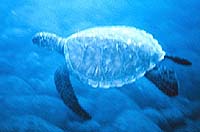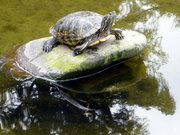 |
|
|
 |
 |  | New Tmnt Teenage Mutant Ninja Turtles Mutant Mayhem (8) Mini Figure Battle Pack $24.95 |  |
 | Small Turtle Ornament $11.99 |  |
 |
 |  | Teenage Mutant Ninja Turtles (2024) #1 2 3 4 Idw Publishing Cover Select $4.88 to |  |
 | Ninja Turtles Toys | 6 Pcs Teenage Mutant Ninja Turtles | Tmnt New Action Figure $17.65 |  |
 |
 |  | Teenage Mutant Ninja Turtles 1 Whatnot Sdcc Beatles Abbey Road Homage Nm Variant $5.95 |  |
 | 4 Pcs Teenage Mutant Ninja Turtles Mini Action Figures Toy Gift Tmnt Collection $9.95 |  |
 |
 |  | Teenage Mutant Ninja Turtles Pudding Pie Fridge Magnet $8.49 to |  |
 | #Us * Lot Effect Earthenware Ceramic Pottery Glazes up 2 Pounds Free Shipping $3.99 to |  |
 |
 |  | Turtle Wax Hybrid Solutions Pure Shine Misting Detailer Multi Pack $21.00 to |  |
 | Nautical Blue Sea Turtle And Baby Swimming By Ocean Currents And Waves Figurine $28.99 |  |
 |
 |  | New ListingBaxter Stockman Tmnt Teenage Mutant Ninja Turtles Figure New 2013 Nickelodeon $39.98 |  |
 | Tmnt Original Animation Cel - 3 Turtles in Disguise-Coa-Rare One of a Kind! $470.00 |  |
 |
 |  | 4 Pcs Movie Teenage Mutant Ninja Turtles Classic Collection Tmnt Action Figures $15.00 |  |
 | Teenage Mutant Ninja Turtles Mutant Mayhem Various Action Figures $11.99 to |  |
 |
 |  | 2024 Teenage Mutant Ninja Turtles Mutatin' Rocksteady Action Figure Tmnt $19.99 |  |
 | Teenage Mutant Ninja Turtles #1 Nm (Idw 2024) PaladinsGate Exclusive Ltd 600! $15.00 |  |
 |
 |  | Teenage Mutant Ninja Turtles Tmnt Mutant Mayhem Sewer Lair Playset New $39.99 |  |
 | Tmnt Tales of the Teenage Mutant Ninja Turtles Mutations: Wingnut $12.95 |  |
 |
 |  | New ListingTmnt - Mutagen Man - Teenage Mutant Ninja Turtles 2022 Classic Collection Figure $21.95 |  |
 | 5"H Blue Sea Turtle Swimming on Waves Statue Sea Life Figurine Room Decor $21.59 |  |
 |
 |  | Freeze Dried Brine Shrimp Cubes - Tropical Fish, Marine Fish, Koi Fish, Turtles $10.95 to |  |
 | Turtle Wax 75th Birthday Ceramic Graphene Paste Wax 5.5 Fl Oz $29.99 |  |
 |
 |  | Teenage Mutant Ninja Turtles Donatello 5" Action Figure Playmates - New $22.95 |  |
 | Teenage Mutant Ninja Turtles 4" Action Figures Bebp/Rocksteady,Leo,Raph, Mike/Don $10.99 to |  |
 |
 |  | 2024 Teenage Mutant Ninja Turtles™ 40Th Ann. 1oz Silver $1 Colored Coin In Card $87.79 |  |
 | Best Quality Real Turtle in Resin, Oddities, Curiosities, Trachemys Scripta $27.50 |  |
 |
 |  | Teenage Mutant Ninja Turtles Retro Turtle Party Wagon Mutant Attack Van 2021 $39.99 |  |
 | Sea Turtle Ornament 2" $15.99 |  |
 |
 |  | Turtle Wax Ice Seal N Shine Hybrid Sealant Long Lasting Spray Wax Multi Packs $16.00 to |  |
 | Teenage Mutant Ninja Turtles Turtles in Time 2xLp Vinyl Video Game Soundtrack $48.00 |  |
 |
 |  | Neca Teenage Mutant Ninja Turtles Turtles in Time Leatherhead Action Figure $27.99 |  |
 | Nephrite Jade Turtle Crystal Carving Hand Carved Figurine Home Garden Decor Gift $14.80 |  |
 |
 |  | Tmnt Raphael #1 Foil Wondercon Convention Variant - Idw 2024 Nm - Ninja Turtles $11.99 |  |
 | New Teenage Mutant Ninja Turtles Mutant Mayhem - Bucket of 50 Mini Figures $24.99 |  |
 |
 |  | 3" Gold Feng Shui Lucky Turtle Statue Figurine Paperweight Gift Home Decor $7.99 |  |
 | Lot Of 4 Teenage Mutant Ninja Turtles Kurt Adler Tmnt Christmas Ornaments Kawaii $42.49 |  |
 |
 |  | Turtle Beach VelocityOne™ Flightdeck $299.99 |  |
 | Wooden carved turtle ornaments, solid wood handicrafts $9.99 |  |
 |
 |  | Teenage Mutant Ninja Turtles: Classic 4" Turtles 4-Pack Figure Bundle by Play. $79.99 |  |
 | Aquatic Turtle Food 10 Pounds Floating 45 % High Protein , Free shipping ! $59.99 |  |
 |
 |  | 2024 Tales Of The Teenage Mutant Ninja Turtles Mutations Mustang Sally Tmnt New $19.99 |  |
![Tubbz - Tmnt - Donatello #4 (Boxed Edition) [New Toy] Figure, Collectible](https://i.ebayimg.com/images/g/El0AAOSw5m5nSVx0/s-l140.jpg) | Tubbz - Tmnt - Donatello #4 (Boxed Edition) [New Toy] Figure, Collectible $16.43 |  |
 |
 |  | Teenage Mutant Ninja Turtles #1 Nm Bundle Set 6 bks (Idw 2024) PaladinsGate Exc! $60.00 |  |
 | Teenage Mutant Ninja Turtles Raphael Pillow Pets Dream Lites Night light Works $9.99 |  |
 |
 |  | 2024 Tuvalu Teenage Mutant Ninja Turtles 40th Bu 1 oz Silver Coin in capsule $44.95 |  |
 | Nautical Ocean Blue Hues Giant Sea Turtle Swimming Decorative Figurine Tortoise $16.99 |  |
 |
 |  | New Sea Turtle 8 inch Stuffed Animal Plush Toy $11.95 |  |
 | 1"- 3" Sun Dried River Fish For, Turtles, Reptiles, Chickens, Birds, Large Fish $7.95 to |  |
 |
 |  | Teenage Mutant Ninja Turtles (1987): The Complete Classic Series Collection [New $27.80 |  |
 | Set of 4 Teenage Mutant Ninja Turtles 8 Inch Plush Set Nwt Complete Set $34.19 |  |
 |
 |  | Tmnt Toilet Taxi & Exclusive Donatello Teenage Mutant Ninja Turtles New 2024 $39.99 |  |
 | Krill, Freeze Dried Superba Krill From Antarctica - Great For Fish, Turtles, Koi $7.95 to |  |
 |
 |  | Red Shrimp-Freeze Dried 3/8" to 1/2" for Small & Medium Fish, Koi, Turtles $8.99 to |  |
 | Ninja Turtles 4 Pcs Set - Teenage Ninja Turtles Action Figure 1988 Nostalgic $15.00 |  |
 |
 |  | New Listing2022 Playmate Teenage Mutant Ninja Turtles Storage Shell Set of 4 Turtles $45.00 |  |
 | Non-Gmo Dried Mealworms Fit Birds Chickens Fish Reptile Turtles 11 5 2 lbs Usa $64.99 to |  |
 |
| Click to see more Turtles items at www.ebay.com
Prices current as of last update, 12/15/24 11:27am.
|
|
|



